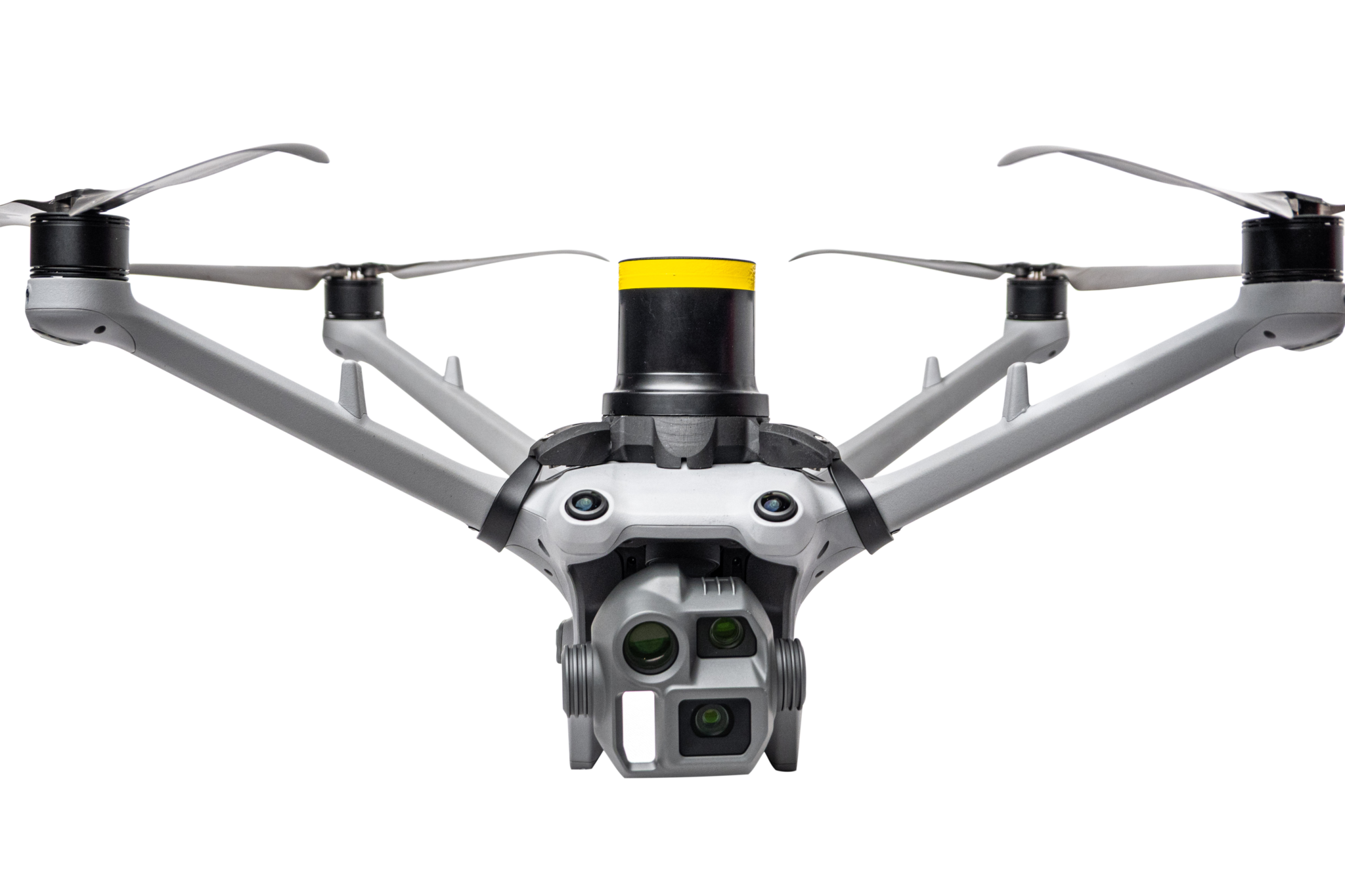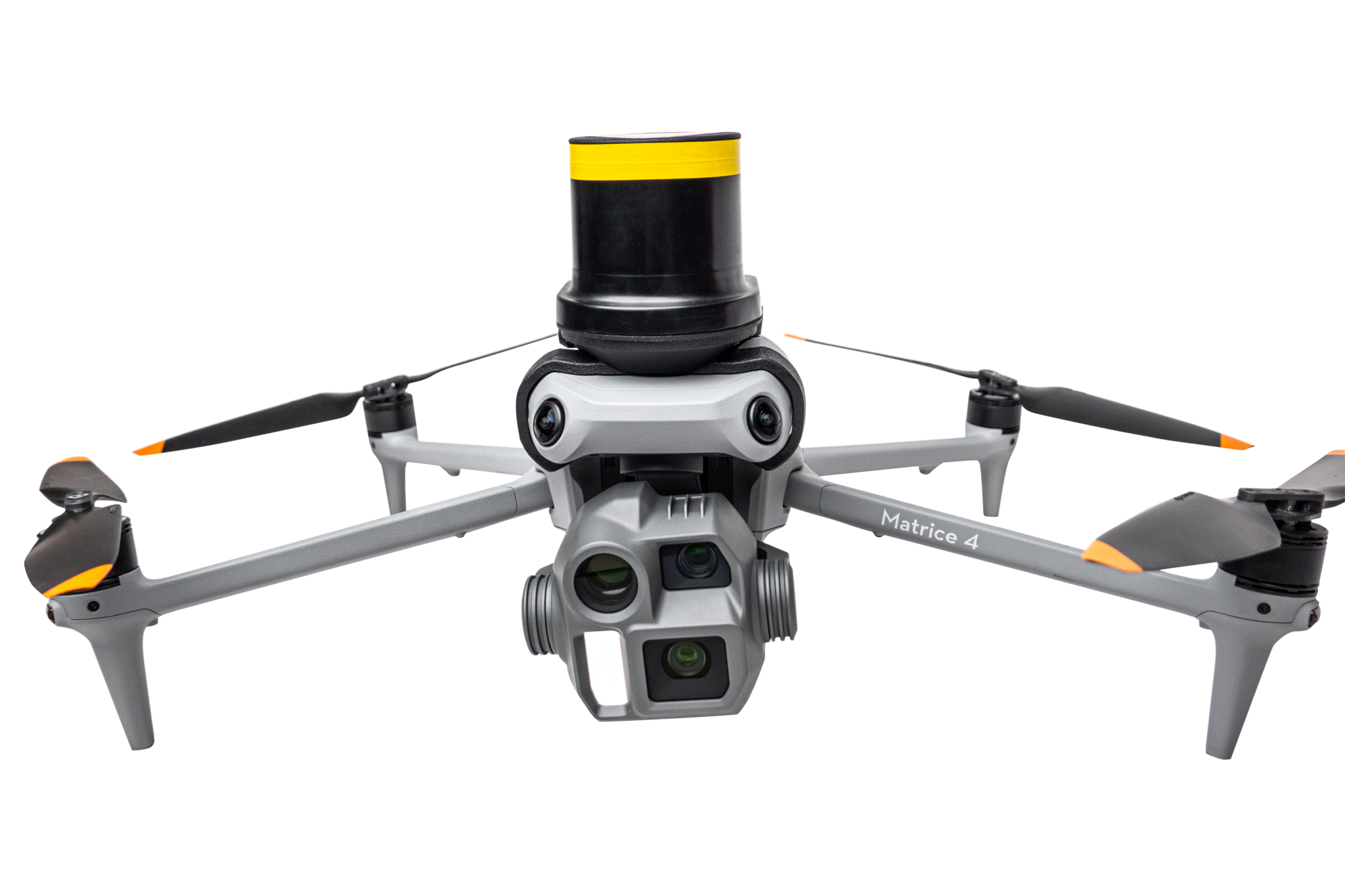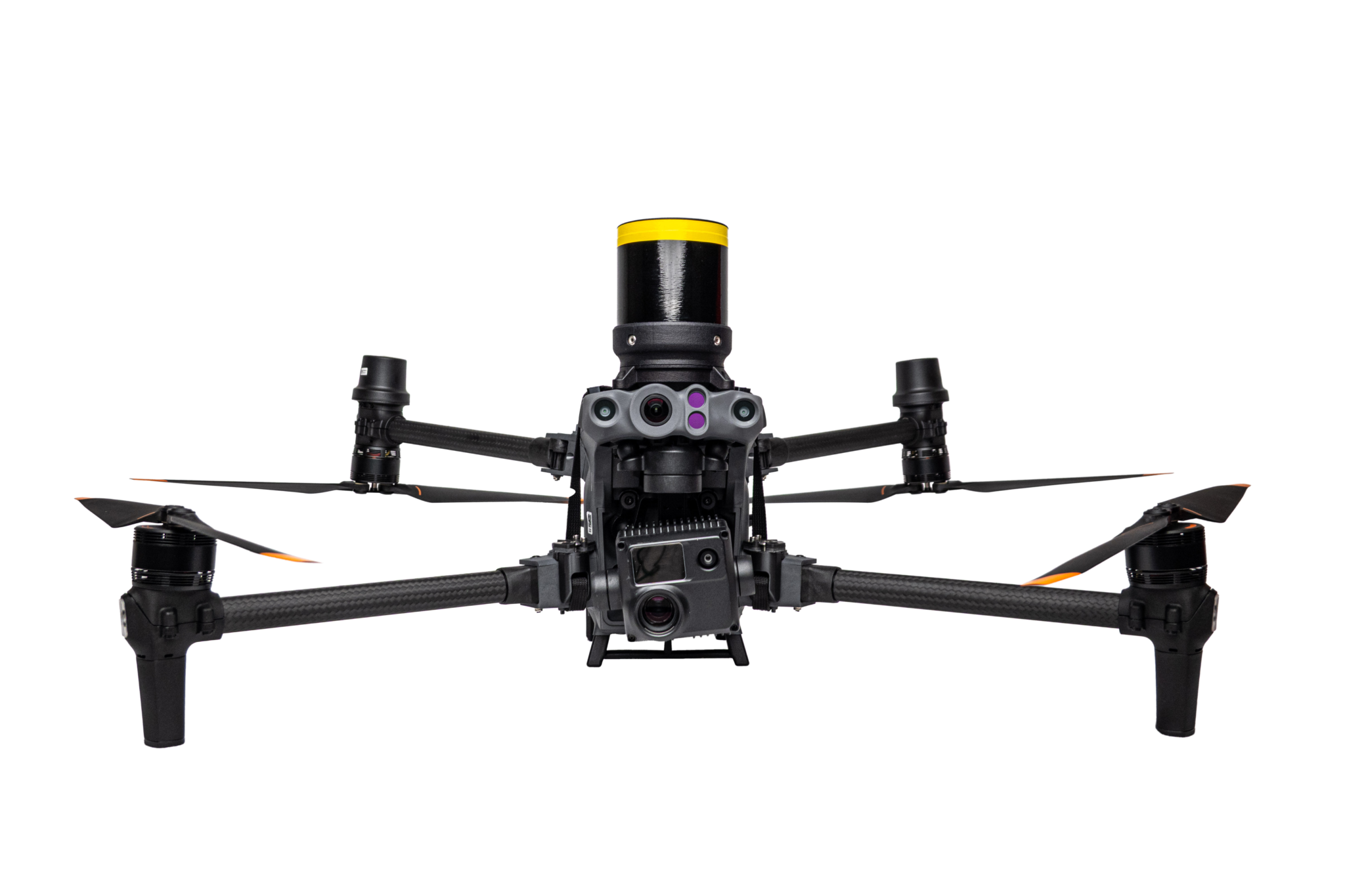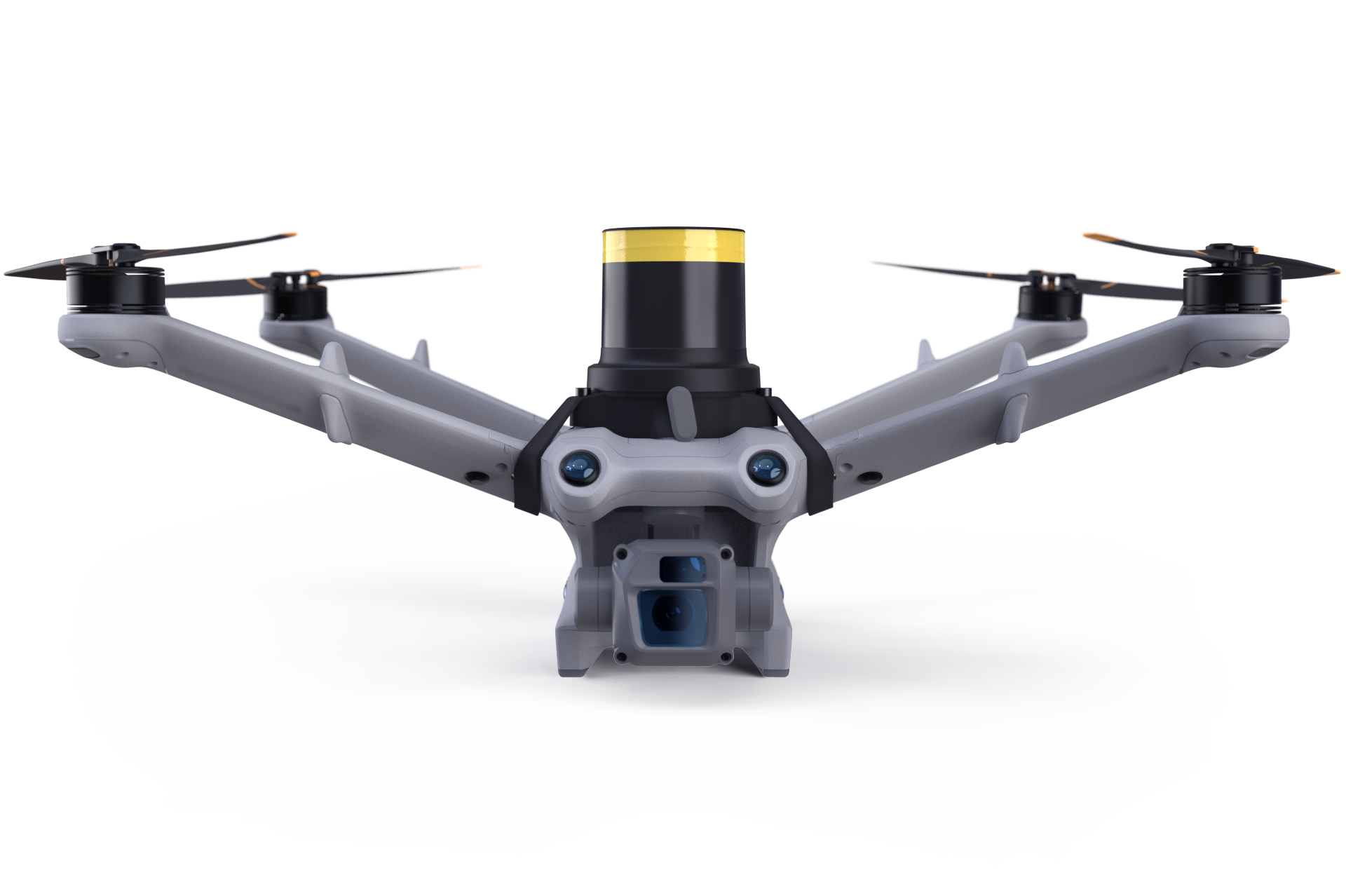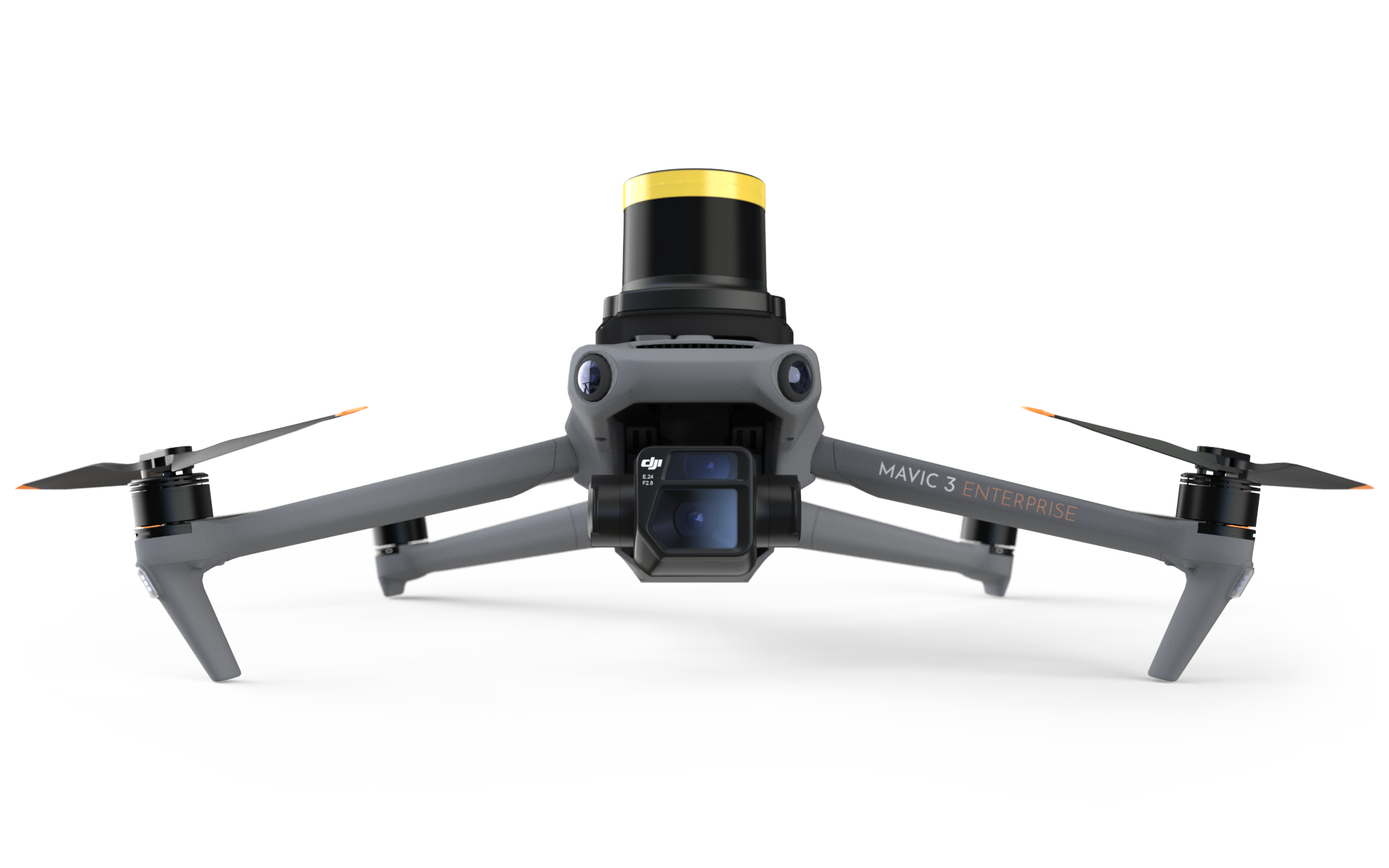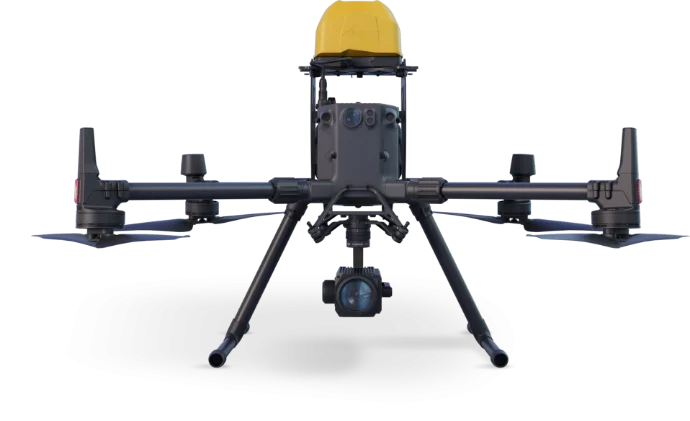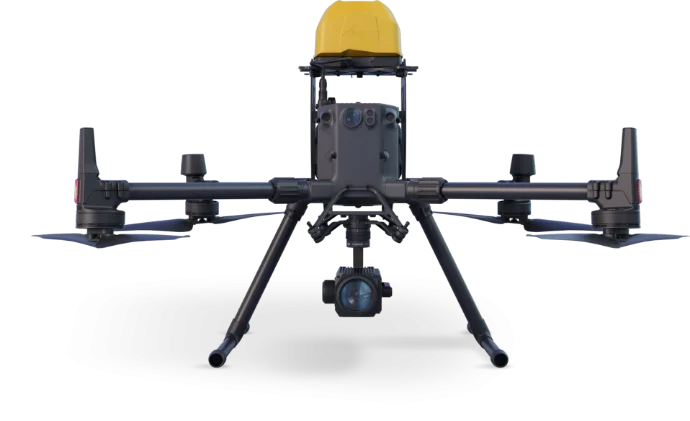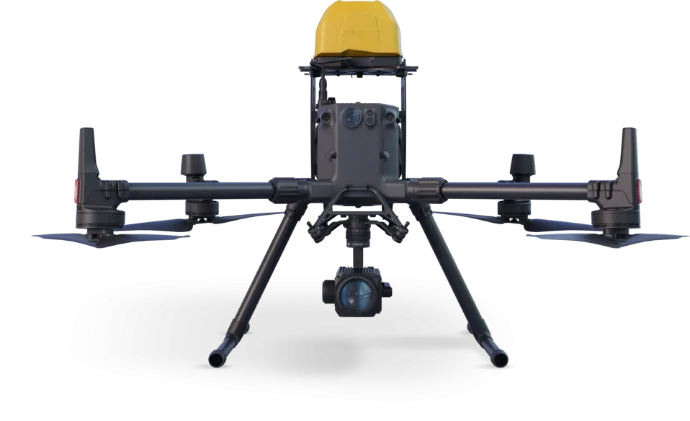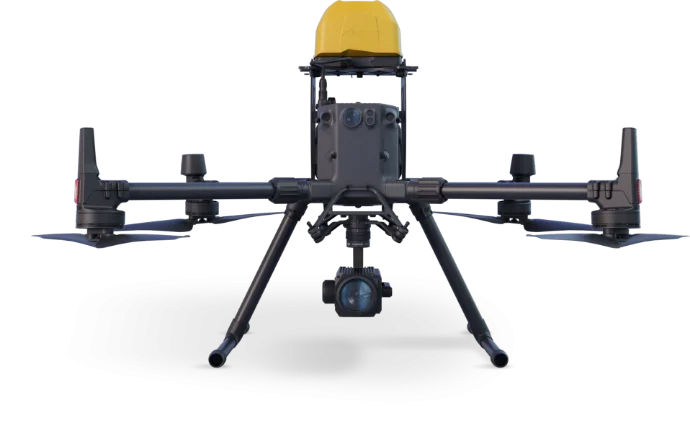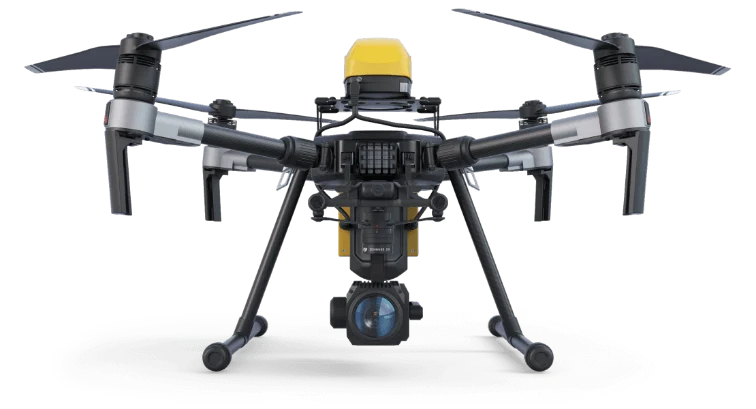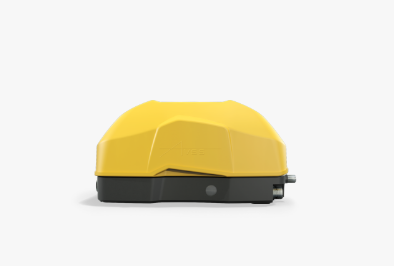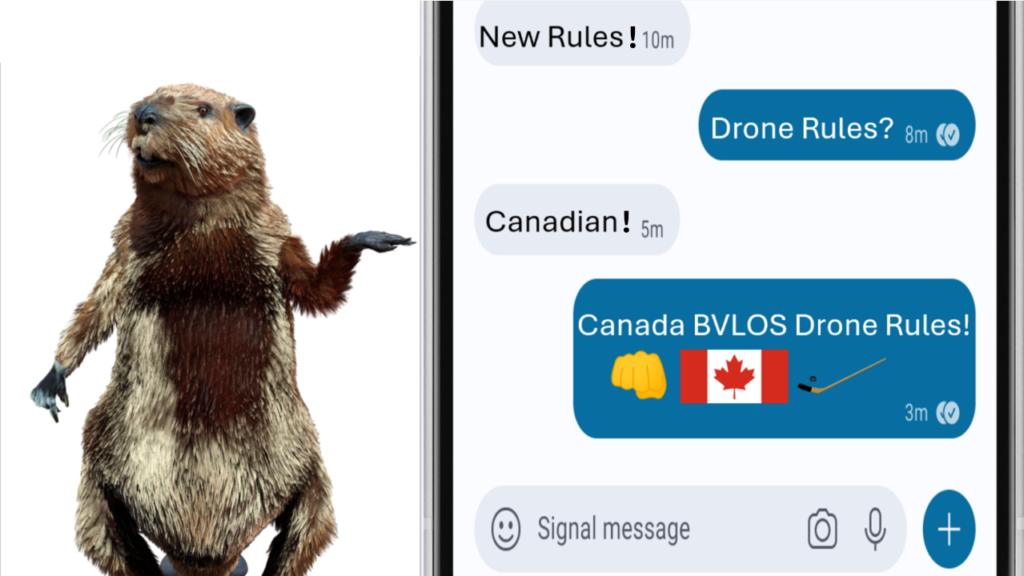
Industry Information:
If you’ve been following the global drone industry, you likely know that stakeholders regularly demand Beyond Visual Line of Sight (BVLOS) operations. For some pilots who fly in those lucky countries, this type of commercial drone operation has been approved for several years. However, for those following JARUS official SORA 2.0/2.5 rules and in countries with Visual Line of Sight (VLOS) rules, such as the previous Transport Canada BVLOS Rules, BVLOS has been a LONG waiting game of submission and approvals.
Luckily, for those in Canada, we have a path to regular, boring old BVLOS and more THIS YEAR.
“To unlock the potential of medium-sized RPAS and beyond visual line-of-sight operations, regulatory amendments are needed to allow more routine operations, provide regulatory predictability, and support economic growth. This will help the Canadian RPAS industry to remain competitive in the global market… The Regulations Amending the Canadian Aviation Regulations (RPAS – Beyond Visual Line-of-Sight and Other Operations) (the Regulations) will allow operations with a remotely piloted aircraft up to 150 kg to be flown within visual line-of-sight and introduce rules for routine beyond visual line-of-sight operations with a remotely piloted aircraft of up to 150 kg over sparsely populated areas, at low altitudes, and in uncontrolled airspace. The Regulations will remove the requirement for a Special Flight Operations Certificate (SFOC) for these operations. The total benefits… will result primarily from enabling high-value RPAS operations, eliminating the need for SFOCs for certain RPAS operations, increased profits for domestic RPAS manufacturers, and increased recreational pilot activities.” (P. 70-71)
Canadian Background Information & Timing:
In June 2023, Transport Canada – Transports Canada announced the first version of the proposed new rules for flying drones Beyond Visual Line of Sight (BVLOS), “medium drones” weighing up to 150kg, and with a few more relevant regulatory items.
When the proposed rules were announced, Canadian drone stakeholders were provided a 90-day consultation window and were told that the new rules would be fully implemented by April 1st, 2025. Obviously, today is March 27th, 2025 and the fully baked proposed rules are not scheduled to be implemented next week.
Now, some parts of the rules will be implemented on or shortly after April 1st, 2025, such as completing the Level 1 Complex exam, and the full implementation date is now November 4th, 2025.

Overall, with the ongoing Part 108 delay in the 11th province and Europeans still slide tackling the adoption of SORA 2.0 and 2.5, I applaud Transport Canada’s timely publication and how they stickhandled the small delay.
Furthermore, considering that Transport Canada was on schedule with the first set of rules in 2019, proactively announced they were behind in public forums (e.g., Aerial Evolution Association of Canada conference), and announced the new rules while we (the members of the free country of Canada) are in the middle of an election, good on Transport Canada for getting this new set of rules across the line with an appropriate amount of time for adoption.

New Rules Summary:
So, I assume you are still reading this to try understand the 175 pages of the new rules (referenced in Canada Gazette, Part 2, Volume 159, Number 7) in a more efficient way. Well, yes, here we go, eh!
First off, I have summarized the new rules based on the following 9 topics. Note, there are some elements of the rules that have not been discussed, such as the economic benefits and comment analysis. This summary is written from the perspective of a manufacturer/modifier who has a large fleet of drones that is regularly tested and used for Advanced and SFOC activities:
- Three Main Objectives of the Regulations
- Key Terms
- BVLOS
- New Privileges for Existing and New Advanced Pilots
- Medium Drones (>25kg to <150kg)
- Microdrones (<250g)
- Pre-Validated Declarations & Ongoing Reporting
- New Costs
- Other Tidbits
1. Three Main Objectives of the Regulations
Aside from appeasing/quieting those stakeholders who have sent numerous emails, made passive-aggressive and outright aggressive social media posts, and (maybe) conducted phone calls “requesting” Transport Canada to allow for more complex operations, the three main objectives of the regulations are as follows:
- Regulatory Predictability, Economic Growth, and Innovation: Transport Canada wants to enable the Canadian drone industry to grow. This is a good thing. So, instead of case-by-case treatment of operations with the Special Flight Operations Certificate (SFOC) process, the new rules will provide predictability. Yes, for some, this means more government oversight and taxation; however, for others, this means we know the game that needs to be played to compete and thrive.
- Safety Risk Mitigation: Hard to argue with safety… No bias. But seriously, Transport Canada must ensure that the air and ground risks are mitigated. The new regulations focus on the safety rules for “the pilot, the product, procedures, and the organization”. (P. 78).
- Fee Modernization: Yes, there will be slightly higher costs. Of course there are people reading this thinking if Transport Canada wants to see us grow, why do we have to pay for it. Personally, the new fees are what they are. As someone who has to foot the bill for the numerous drone registrations, going from a $5 to a $10 fee will not break the bank. More details below.
2. Key Terms
Kindly, Transport Canada provided a list of definitions that replace the old definitions in various sections. Below is a copy/paste of some of the key terms in alphabetical order that start on Page 14 of the new rules:
- Advertised Event: means an outdoor event that is advertised to the general public, including a concert, festival, market or sporting event. (événement annoncé)
- BVLOS Operation: means an operation of a remotely piloted aircraft that is not in visual line-of-sight, but does not include an extended VLOS operation or a sheltered operation. (opération en BVLOS)
- Contingency Procedures: means the procedures to be followed to address conditions that could lead to an unsafe situation. (procédure de contingence)
- Extended VLOS Operation: means an operation of a remotely piloted aircraft that is not in visual line-of-sight but during which unaided visual contact is maintained with the airspace in which the aircraft is operating in a manner sufficient to detect conflicting air traffic and other hazards and take action to avoid them. (opération en VLOS prolongée)
- Ground Risk Buffer: means the area immediately surrounding the contingency volume that, when measured horizontally from the perimeter of the contingency volume, is at least equal to the planned maximum altitude of the remotely piloted aircraft for the flight. (tampon de risque au sol)
- Medium Remotely Piloted Aircraft: means a remotely piloted aircraft that has an operating weight of more than 25 kg (55 pounds) but not more than 150 kg (331 pounds). (aéronef télépiloté moyen)
- Mandatory Action: means the inspection, repair or modification of a remotely piloted aircraft system that is necessary to prevent an unsafe or potentially unsafe condition. (mesure obligatoire)
- Operating Weight: means the weight of a remotely piloted aircraft at any point during a flight, including any payload and any safety equipment that is on board or otherwise connected to the aircraft. (masse opérationnelle)
- Payload: means a system, object or collection of objects, including a slung load, that is on board or is otherwise connected to a remotely piloted aircraft but that is not required for flight. (charge utile)
- Populated Area: means an area with more than five people per square kilometre. (zone peuplée)
- Sheltered Operation: means an operation of a remotely piloted aircraft that is not in visual line-of-sight and during which the aircraft remains at a distance of less than 200 feet (61 m), measured horizontally, from a building or structure and at an altitude no greater than 100 feet (30 m) above that building or structure. (opération protégée)
- Sparsely Populated Area: means an area with more than 5 but not more than 25 people per square kilometre. (zone peu densément peuplée)

3. BVLOS
Well, it’s here…kind of. Starting in November, operators will be able to fly BVLOS without an SFOC. Of course, there are pilot, airframe, testing, plans, approvals, and such required before we go full BVLOS on our skies.
However, there is a path for takeoff.
Per the Gazette, Transport Canada has approved 335 SFOC for lower-risk BVLOS. These previous approvals were critical in the development of the new rules. Furthermore, a sneak peak into the future: “It will also allow TC to shift resources towards issuing SFOCs for more complex operations — e.g., in urban centres, at higher altitudes, or for larger aircraft — and integration with the broader aviation sector.” (P. 76)
For those looking to fly BVLOS, here are some items to be aware of:
- “The new requirements can be grouped into “the 3 Ps”: the Pilot (pilot training and certification), the Product (aircraft and supporting systems) and the Procedures (operational rules).” (P. 78)
- Furthermore, these new rules require individuals or organizations to appoint an accountable executive, establish training programs, identify a person responsible for maintenance, implement SOP, and establish risk management processes.
- Lower-risk BVLOS – the new regulations will introduce a new pilot certification, called Level 1 Complex Operations. To receive this certification, the pilot will need to (1) attend mandatory RPAS training [“ground school”], (2) complete an online multiple-choice test [Available April 1st], and (3) complete an in-person flight review.
- Pilots will need to remain in uncontrolled airspace and ensure the flights are kept over the unpopulated or sparsely populated areas. Therefore, pilots must ensure flights are over areas with fewer than 25 people per square kilometers (more rural areas). This can be done in advance by using the population maps by Statistics Canada, the National Research Council Canada / Conseil national de recherches Canada Drone Site Selection Tool, performing a site survey to validate maps, and identifying events where people may gather (e.g., soccer game, festival).
- Pilots will also be responsible for ensuring a minimum distance from clouds, which requires “RPAS pilots to maintain a minimum ground visibility of 3 miles and to stay clear from clouds.” (P.89)
- To fly BVLOS under the rules, the operator will need a drone that meets the Pre-Validated Declaration requirements.
4. New Privileges for Existing and New Advanced Pilots
For existing Advanced Pilots, of which there are 16,338 as of March 6th, these rules give us new opportunities to fly without needing to apply for the Level 1 Complex Operations certificate. Also, Visual Observers (VO) will not require an Advanced Certificate and a Basic Certificate will suffice for the VO. Transport Canada “…has determined that the following operations may be added to the types of operations conducted by Advanced Pilot Certificate holders without the requirement to obtain a new pilot certificate”. (P.63)
These include:
- VLOS operations with a medium-sized drone (above 25 kg up to and including 150 kg);
- Extended VLOS operations (EVLOS), using a visual observer to scan the airspace; and
- Sheltered operations, which allow the drone to be flown around a building or structure without the use of a visual observer.
5. Medium Drones (>25kg to <150kg)
For many countries, the <25kg maximum takeoff weight (MaxTOW) limit has been a reality for several years. For some, going above the 25kg MaxTOW is not of interest. To date, these <25kg drones have been affordable (thanks, DJI), readily available, and get the job done. However, as cameras, sensors, and other attachments are included, sometimes these <25kg do not make the cut.
By increasing the available MaxTOW to 150kg for non-SFOC operations, Transport Canada is positioning Canadian drone manufacturers for success and enabling pilots to perform more tasks with their tools (i.e., drones).
The new rules allow for two new categories:
- Medium drones that weigh above 25kg up to and including 150kg flying within VLOS near and over people, in both controlled and uncontrolled airspace; and
- Drones that weigh 250g up to and including 150kg flying BVLOS in unpopulated and sparsely populated areas, below 122 meters above ground level, and in uncontrolled airspace.
Operating medium drones:
“Existing Part IX requirements will continue to apply for medium-sized drones within VLOS, such as: (I) operations in uncontrolled airspace must remain below 122 meters; and (II) operations in controlled airspace require authorization from air traffic services.
In addition, the Regulations will introduce new requirements to mitigate the additional safety risks associated with larger drones, such as: (I) increasing the minimum distance from people not involved in the operation, which will reduce the risk of a larger drone causing injury to a person; and (II) additional flight planning considerations, such as weather and ensuring the drone does not fly during low visibility, affecting the pilot’s ability to maintain line of sight.” (P.88)
6. Microdrones (<250 grams)
Under the old rules, <250 gram drones could be used at advertised events without an SFOC. However, Transport Canada has modified the rules. Under the new rules, pilots of microdrones, such as the DJI Mavic Mini, Ascent AeroSystems Helius, or Autel Robotics Nano, will need to adapt to the requirements for advertised events.
Specifically, an SFOC will be needed for any size microdrone to fly at “an outdoor event that is advertised to the general public, including a concert, festival, market or sporting event.” (P. 84)
Transport Canada’s rationale was that “this amendment was added following pre-publication of the proposed Regulations in response to comments from stakeholders who noted that microdrones are frequently observed at advertised events and create safety risks for other RPAS operators and the public due to the constrained nature of the airspace at these events, and the higher density of people on the ground.” (P. 84)
For pilots seeking approval to fly at an advertised event, they should be aware that this type of event is considered a “low-complexity operation” (P. 63) and the cost for such an SFOC is stated to be $75, half of the previous $150 Transport Canada proposed.
7. Pre-Validated Declarations
PVD summary:
Under the old/current rules, drone manufacturers and modifiers can self-declare that they meet the requirements for Advanced Operations, which include controlled airspace, near people (>5 meters to <30 meters from bystanders), and over people (<5 meters from bystanders).
This system has allowed many companies to get to market rather quickly. However, there have been numerous cases of abuse. Per Transport Canada’s presentation at the Aerial Evolution conference in November 2024, there were 26 invalidated declarations and 3 voluntarily withdrawn declarations.
With the new Pre-Validated Declarations (PVD), “Manufacturers determine which technical requirements their drone and supporting systems meet and whether they want to declare to TC via the Declaration or Pre-Validated Declaration Process. A drone will not be able to fly in any of the operating environments under the new framework unless a Declaration or a Pre-Validated Declaration has been made by the manufacturer to operate in the respective operating environment.” (P.85)

With a PVD, an operator would be able to perform operations with the following:
- The use of a medium-sized drone in controlled airspace;
- The use of a medium-sized drone in uncontrolled airspace;
- The use of a medium-sized drone away from people; and
- BVLOS operations away from populated areas, below 400 feet, and in uncontrolled airspace.
PVD process:
The PVD is a two-step process.
The first step involves a manufacturer submitting a plan to show how their drone will meet the requirements of Standard 922. Unlike the Advanced process, Transport Canada will proactively look at your documentation. So, for those who have previously skirted the rules and believe they have a great drone by submitting three lines to Transport Canada for an Advanced declaration, this new process should make it slightly more difficult for your BS.
This new process will be required for (1) VLOS operations with medium-sized drones near and over people and (2) Certain BVLOS operations in uncontrolled airspace, below 122 meters, and over sparsely populated areas.
After Transport Canada reviews the plan and accepts how the manufacturer will complete the requirements for Standard 922, the manufacturer will receive an acceptance letter. Then, “the manufacturer or service provider will execute the accepted plan, and subsequently declare to TC that their system meets Standard 922.” (P.86)
Additional Tasks:
Once a PVD is complete, the tasks do not stop for manufacturers. Under the new rules, a manufacturer will need to submit annual reporting and service difficulty reporting to Transport Canada.
Annual reporting: This annual reporting includes “estimated number of product flight hours, a description of any safety-related issues that came up over the year, and any design changes that may affect the compliance with the requirements in Standard 922.” (P.86)
Service difficult reporting: “A service difficulty is any malfunction or defect that could affect the safety of the drone or could injure a person. Manufacturers or service providers with PVDs on their drone or system will need to establish and maintain a system for service difficulty reporting for pilots and RPAS Operator Certificate holders. Manufacturers will need to provide operators with a description of what systems or elements are critical for safety so they can report to the manufacturer or service provider as soon as feasible if a service difficulty has occurred. Manufacturers and service providers will need to investigate service difficulties and, if the conclusion is the system no longer meets the technical requirements of Standard 922, a mandatory action, which is an action to prevent an unsafe or potentially unsafe condition, will need to be developed to fix the issue. Manufacturers and service providers will need to notify operators of the mandatory action as soon as possible and whether the declaration on the product or supporting system is still valid.”
This ongoing reporting should provide Transport Canada with novel data on the performance of various drone manufacturers. Far too often, drone manufacturers can hide behind their great marketing as many pilots do not perform reporting to Transport Canada. As a company who has integrated with many drones and is the backup system for the drone failure/pilot error, this is a welcome activity and should shed light on which drones actually performs to the marketing specification.
8. Costs
Show me the money… As previously mentioned, Transport Canada has revised their fee structure. This “Fee Modernization Initiative” will, of course, result in some pilots dropping their gloves while others will have their elbows up.
However, as an industry stakeholder who manufactures drone products, has paid for ~10 advanced licenses, has paid the registration of more than 110 drones (we crash stuff), and has received a few SFOC approvals, I accept the reality of the “Fee Modernization Initiative”.
These new fees are as follows:

9. Other Tidbits
In this section, I’ve included an unorganized group of information that may be relevant to the readers:
Prohibition – emergency security perimeter:
- This rule seems to be a no-brainer… Don’t fly your drone when the goods guys are trying to save a life, a police or fire-fighting operation is ongoing, and/or when an operation is “conducted in the service of a public authority”. (P.18)
Prohibition – commercial air service
- If you are flying a commercial air service with a drone that weighs more than 250 grams, you must be “Canadian or an employee, an agent or mandatary or a representative of an RPAS operator.” (P.18)
- Unless you are a citizen of a foreign state with which Canada has entered into a Free Trade Agreement that includes said operation and if they have an SFOC. (P.18-19)
- And one more unless: “A person that does not meet the criteria referred to in subsection (1) may operate a remotely piloted aircraft to provide an air transport service if the person holds a licence issued under section 61 of the Canada Transportation Act.” (P.19)
Aircrafts leaving Canadian domestic airspace:
- “A pilot may operate a remotely piloted aircraft outside of Canadian Domestic Airspace if the operation is conducted in accordance with a special flight operations certificate — RPAS issued under section 903.03.” (P. 22)
Site survey:
- This section of the rules relates to flight planning. Key tasks in this list is taking into account the “landing and recovery” and “predominant weather and environmental conditions”.
- At AVSS, we are well aware of the potential for parachute drift. From our third-party testing data, an unguided parachute can drift greater than the 1:1 prescribed by SORA.
- It is great to see that Transport Canada has acknowledged that a site survey needs to include the planning of land and recovery. However, it would be beneficial for pilots if it was clear that the site survey needs to include “recovery of a parachute under the environmental conditions”.
- “No pilot shall operate a remotely piloted aircraft system unless, before commencing the operation, they determine that the operational volume is suitable by conducting a site survey that takes into account the following factors (P. 26):
(a) the type of airspace and any requirements applicable to the flight geography, including any specified in a NOTAM; (b) the altitudes and routes to be used for approach, take-off, launch, landing or recovery; (c) the proximity of other aircraft operations; (d) the proximity of airports, heliports and other aerodromes; (e) the location and height of obstacles, including wires, masts, buildings, cell phone towers and wind turbines; (f) the predominant weather and environmental conditions and the weather forecast for the duration of the flight; (g) in the case of a VLOS operation, an extended VLOS operation or a sheltered operation, the horizontal distance from any person not involved in the operation; and (h) in the case of a BVLOS operation, the distance from any populated area or sparsely populated area.
Operating manuals
- This part of the new rule, 901.31, states that “No pilot shall operate a remotely piloted aircraft system unless it is operated in accordance with the applicable operating manuals.”
- From a parachute manufacturer’s perspective, does this mean the OEM’s manual or the parachute/payload manufacturers’ manual?
- This is important as some payload/parachute companies choose to design their systems to exceed the maximum takeoff weight of the OEM’s operating manual. To date, Transport Canada has stated that the declaration was made by the modifier and it is on them. However, the stakeholders from the legal, insurance, and public acceptance fields have yet to chime in.
- It will be interesting to see how this is interpreted under the new rules. For example, if DJI states that the Mavic 3 Enterprise can only have 130/135 grams of payload added to the airframe, does this become gospel? Hopefully, this is a non-issue with new drones; however, a topic that needs further clarification.

Medical requirements:
- During the pre-consultation phase, Transport Canada had proposed medical requirements for Level 1 Complex pilot certificates.
- However, “TC heard from stakeholders that the medical requirements could be limiting to certain groups, and that the operational complexity of lower-risk BVLOS should not necessitate an assessment of medical fitness. In light of the comments, TC held further discussions with key international partners, including the U.S., and determined that CARs 901.19, Fitness of Crew Members and the requirements of the RPAS Operator Certificate (RPOC), provides sufficient mitigations to maintain safety within the level of risk for BVLOS operations. However, a medical standard for operations outside the lower-risk category may be considered in future regulatory work.” (P.83)
Administrative Monetary Penalties (AMPs):
Transport Canada has modified the penalties for those pilots who choose not to follow the rules. The following penalties have been increased (P.96-97):
- “900.07 and 901.14 (which replace 901.15 – inadvertent entry in restricted and controlled airspace) increased from $1,000 for individuals and $5,000 for corporations to $3,000 for individuals and $15,000 for corporations;
- 901.41(1) (special aviation events and advertised events) increased from $1,000 for individuals and $5,000 for corporations to $3,000 for individuals and $15,000 for corporations; and
- 901.47(4) [which is currently designated as 901.47(3) – operations at or in the vicinity of an aerodrome, airport, or heliport] increased from $1,000 for individuals and $5,000 for corporations to $3,000 for individuals and $15,000 for corporations.”
Some Initial, Final Thoughts:
Well, we have made great strides as an industry. With these new regulations, the Canadian drone industry is better off this year than last. Yes, there are more tasks to complete to get to urban use cases and, of course, Transport Canada could move slightly faster. However, this is Canada and the safety of bystanders is important. We have a lot of near-empty space to travel to and from by drone. These new rules will directly benefit those living in rural locations without significant risk to the people in densely populated areas. Furthermore, this will give Transport Canada more time to work on the critical urban core activities to improve regular Canadians’ daily lives.

ABOUT AVSS:
Founded in 2017, AVSS – Aerial Vehicle Safety Solutions Inc. (AVSS) is a Canadian aerospace company commercializing drone technology for Urban Air Mobility. AVSS’s current products are ASTM F3322 drone parachute recovery systems for commercial drones, independent flight termination systems, and precision-guided delivery systems for last-mile delivery.
AVSS’s retrofit products (DJI M3D and M3TD for Dock 2, DJI M200, DJI MAVIC 3 ENTERPRISE, DJI M300 RTK, DJI M350 RTK) are distributed worldwide through their more than 50 authorized dealer network and sold directly to drone manufacturers across the world. AVSS also provides direct support to drone manufacturers and pilots who integrate the PRS product line for flight over people and BVLOS compliance.
Visit us at www.avss.co to learn about drone parachutes, regulatory compliance, custom integrations, and more.
